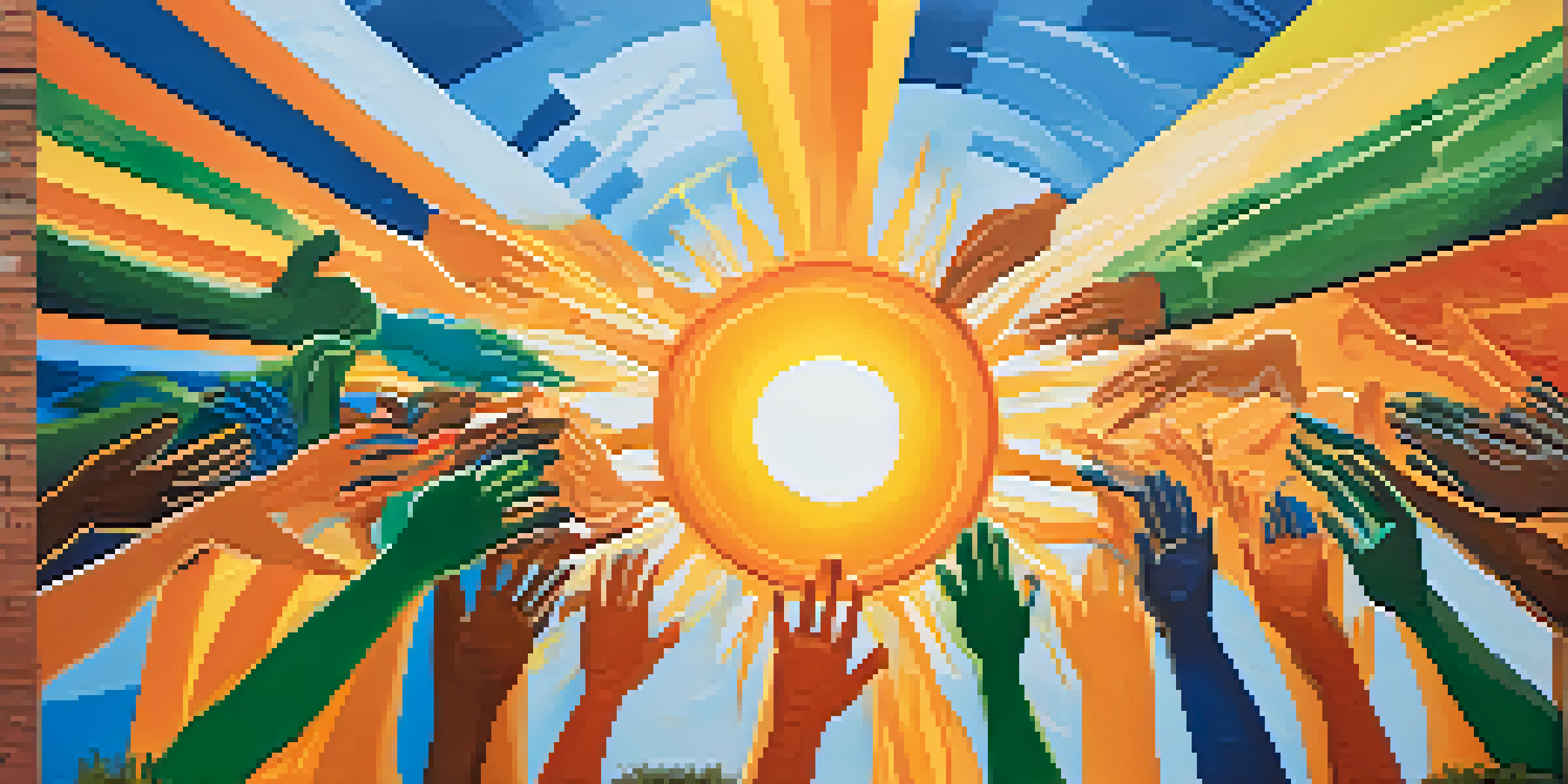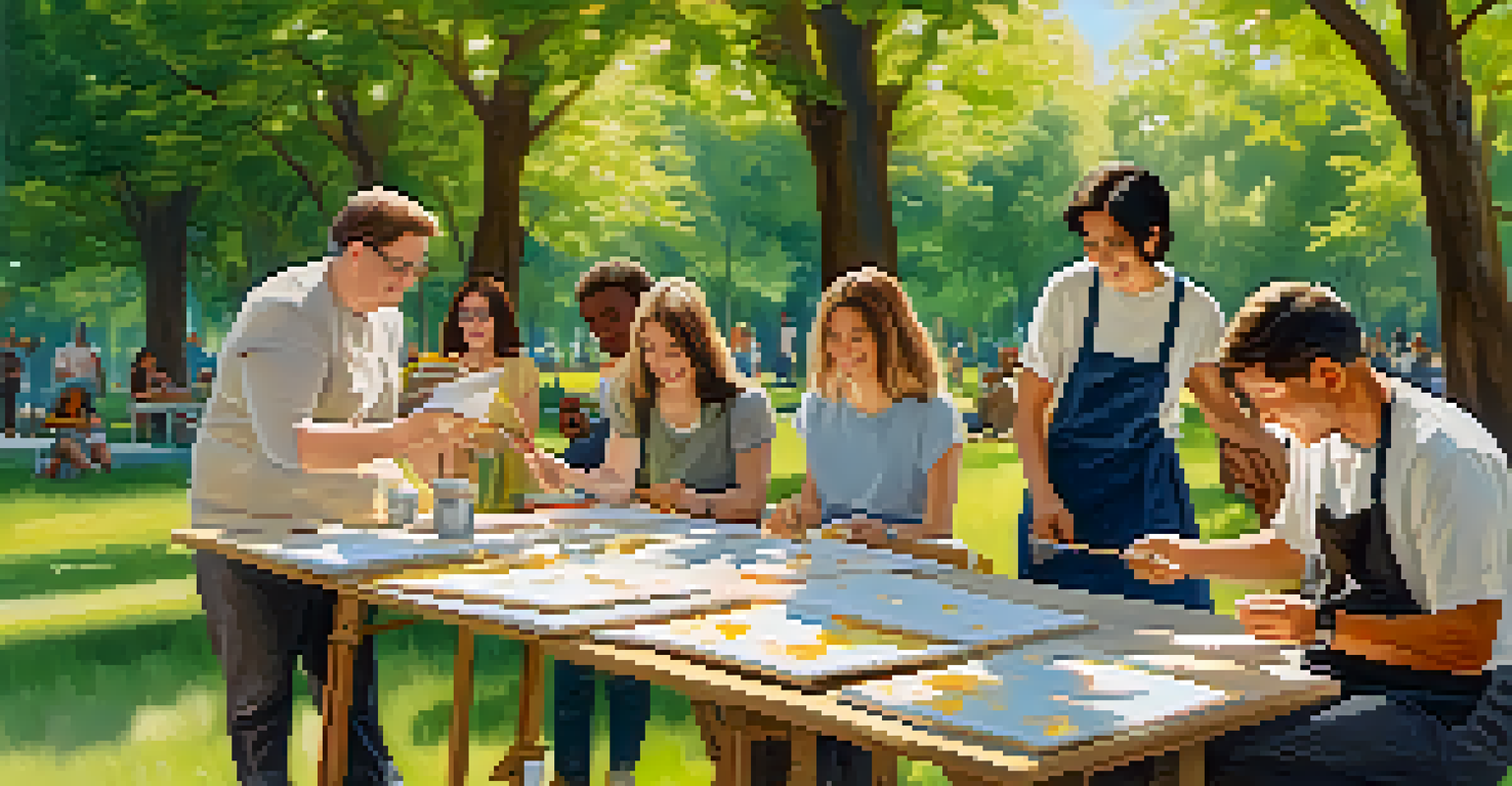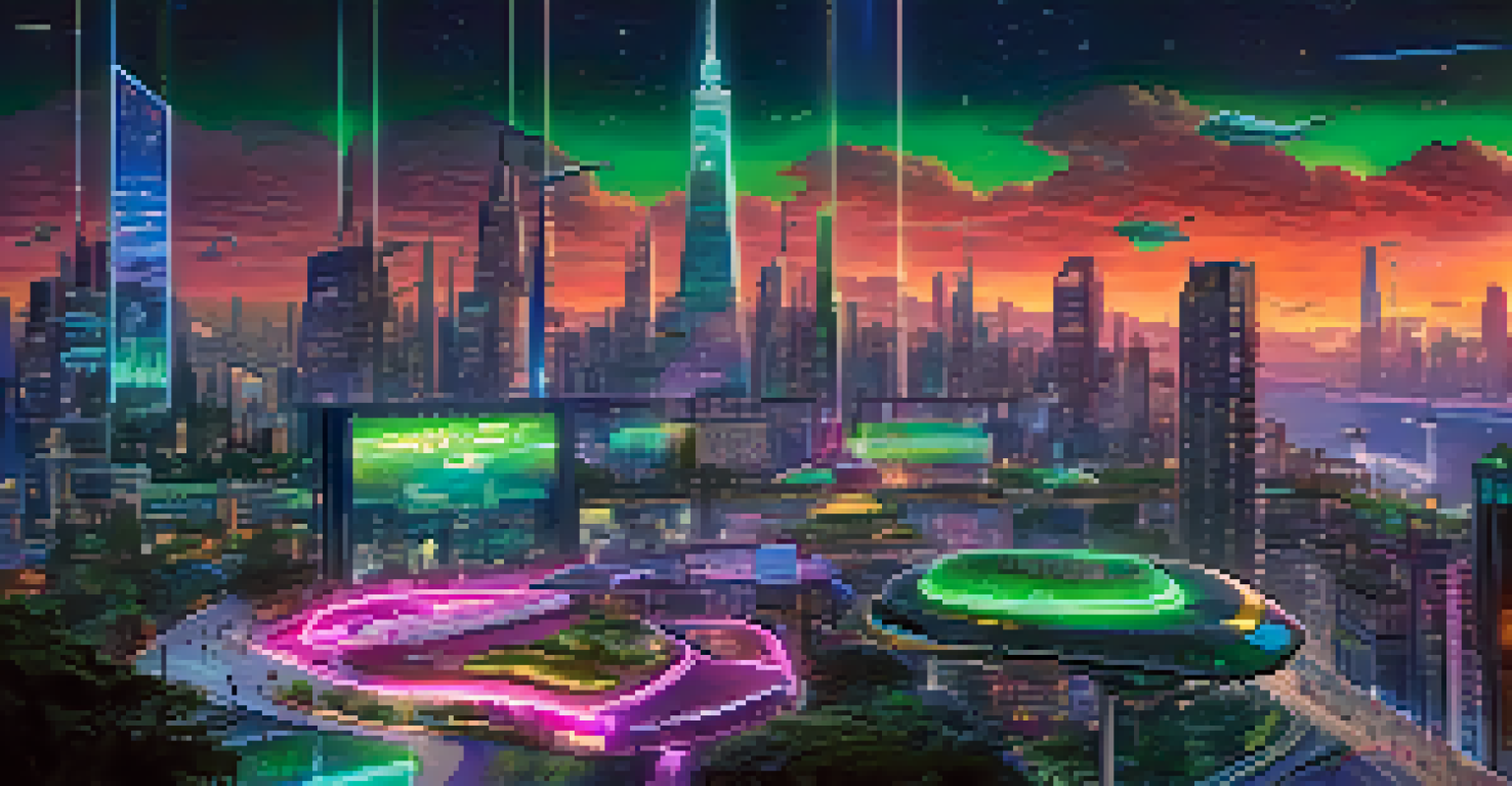Art and Activism: Collaborations That Changed the Narrative

The Historical Roots of Art as Activism
Art has long been a medium for social change, with roots tracing back to ancient civilizations. This tradition continues as artists use their creativity to challenge societal norms and advocate for justice. From the bold murals of the civil rights movement to the poignant poetry of protest, art has the power to illuminate issues often ignored.
Art is not freedom from discipline, but disciplined freedom.
For instance, the works of Diego Rivera in Mexico showcased the struggles of the working class, influencing public opinion and policy. Similarly, artists during the Harlem Renaissance used their talents to address racial inequality, sparking conversations that resonate to this day. These early examples set the stage for future collaborations between artists and activists.
As we delve into this rich history, we see that art is not just about aesthetics; it’s a powerful tool for activism. The emotional connection fostered through art can mobilize communities and inspire change, highlighting the indispensable role of creativity in the fight for justice.
Famous Collaborations that Shaped Social Movements
Throughout history, there have been iconic partnerships between artists and activists that transformed social movements. One notable example is the collaboration between visual artist Ai Weiwei and human rights activists, which has brought global attention to issues like freedom of expression and refugee rights. Their combined efforts not only raised awareness but also challenged oppressive regimes.

Another powerful collaboration was between the music of Bob Dylan and the civil rights movement. Songs like 'Blowin' in the Wind' became anthems for change, uniting people across the nation in their quest for equality. This synergy between art and activism creates a resonance that often transcends language and cultural barriers.
Art Drives Social Change
Art has historically served as a powerful medium for activism, inspiring communities to advocate for justice and challenge societal norms.
These collaborations illustrate how art can amplify activist voices, making complex issues accessible and relatable. By working together, artists and activists can reach wider audiences, inspiring action and fostering community around important causes.
The Role of Street Art in Activism
Street art has emerged as a dynamic form of activism, transforming public spaces into canvases for change. Artists like Banksy have used their platforms to comment on social issues, from poverty to war, often sparking discussions that challenge the status quo. The ephemeral nature of street art also adds an urgency to the messages being conveyed.
The role of the artist is to make the revolution irresistible.
For example, the 'I AM 1 IN 5' campaign in the UK used street art to raise awareness about mental health, encouraging open conversations about stigma. By placing powerful messages in everyday environments, street artists engage the public in dialogue, making serious issues impossible to ignore. This approach not only beautifies urban landscapes but also empowers communities.
Moreover, street art often reflects the voices of marginalized groups, giving them a platform to express their stories and struggles. This democratization of art challenges traditional narratives and fosters a sense of belonging, reminding us of the profound impact creativity can have on social justice.
Digital Activism and Its Artistic Expressions
In the digital age, activism and art have found a new home online, where creativity meets technology. Social media platforms have become vital spaces for artists to share their work, raise awareness, and mobilize support for various causes. Hashtags like #BlackLivesMatter have seen artists contribute visually compelling pieces that resonate with global audiences.
Digital art forms, such as graphic design and video, allow for innovative storytelling that can quickly spread awareness. For instance, the viral art campaigns surrounding climate change have utilized striking visuals to engage younger generations, motivating them to take action. This blend of art and technology creates immersive experiences that can leave a lasting impact.
Collaborations Amplify Voices
Iconic partnerships between artists and activists enhance the impact of social movements by making complex issues relatable and accessible.
As we continue to navigate a world increasingly driven by digital interactions, the role of art in activism will only grow more significant. The ability to reach diverse audiences and spark conversations through creative expression makes digital activism a formidable force for change.
Art Therapy as a Tool for Healing and Activism
Art therapy has emerged as a powerful tool not only for individual healing but also for collective activism. By utilizing creative expression, individuals can process trauma and share their experiences, especially in marginalized communities. This therapeutic approach often leads to empowerment, fostering resilience among those affected by social injustices.
For example, initiatives that provide art therapy for survivors of domestic violence or trauma have shown significant emotional benefits, creating safe spaces for healing and expression. These programs not only address personal struggles but also advocate for broader social change by amplifying the voices of those who have been silenced.
Moreover, art therapy can unite individuals around common causes, creating a sense of community and shared purpose. By transforming pain into art, participants can inspire others and raise awareness about critical issues, demonstrating how healing and activism can go hand in hand.
The Impact of Music in Advocacy and Change
Music has always played a vital role in activism, serving as a rallying cry for social movements. From protest songs of the 1960s to contemporary anthems addressing modern issues, music has the unique ability to unite people and inspire action. Artists like Kendrick Lamar and Billie Eilish are using their platforms to shed light on issues such as racial inequality and climate change through powerful lyrics and engaging performances.
Concerts and music festivals have also become venues for activism, with many artists using their events to raise funds and awareness for various causes. For instance, the One Love Manchester concert not only honored the victims of a tragic attack but also showcased the power of community and resilience in the face of adversity. These events create a sense of belonging among attendees, reinforcing the idea that change is possible when people come together.
Digital Art Expands Activism
The rise of digital platforms allows artists to creatively engage with global audiences, making activism more impactful and widespread.
Additionally, the emotional connection fostered through music can motivate individuals to engage with social issues in a deeper way. Whether it's through lyrics that resonate with personal experiences or the communal experience of singing along, music has the power to inspire change and drive social movements forward.
Future Directions: Art and Activism Together
Looking ahead, the future of art and activism holds exciting possibilities as technology continues to evolve. We can expect to see more innovative collaborations that bridge various art forms, from virtual reality experiences to interactive installations. These new mediums allow for immersive storytelling that can engage audiences in ways we’ve never seen before.
Moreover, as global challenges like climate change and social injustice persist, artists will play an essential role in advocating for change. By addressing pressing issues through their work, they can inspire action and foster a sense of responsibility among audiences. The intersection of art and activism will remain crucial in shaping public discourse and driving social progress.

Ultimately, the collaboration between art and activism will continue to evolve, reflecting the complexities of our world. As artists and activists join forces, they create a tapestry of voices and experiences that challenge narratives and inspire hope, reminding us that creativity can indeed change the world.